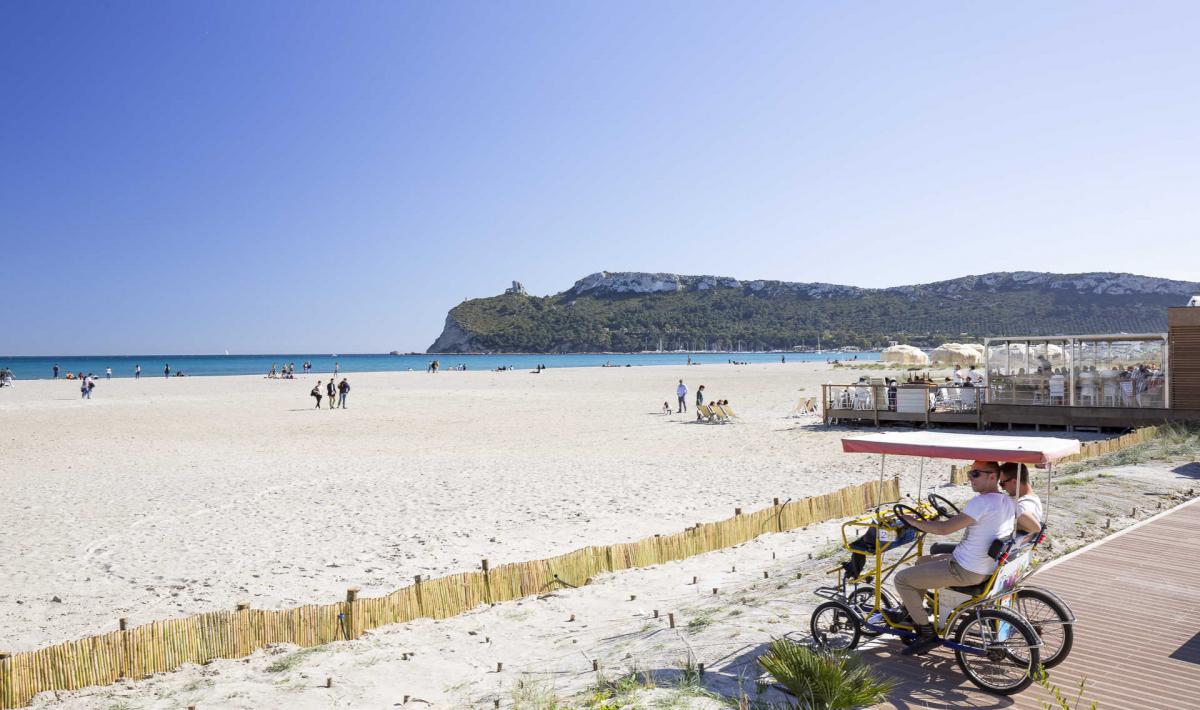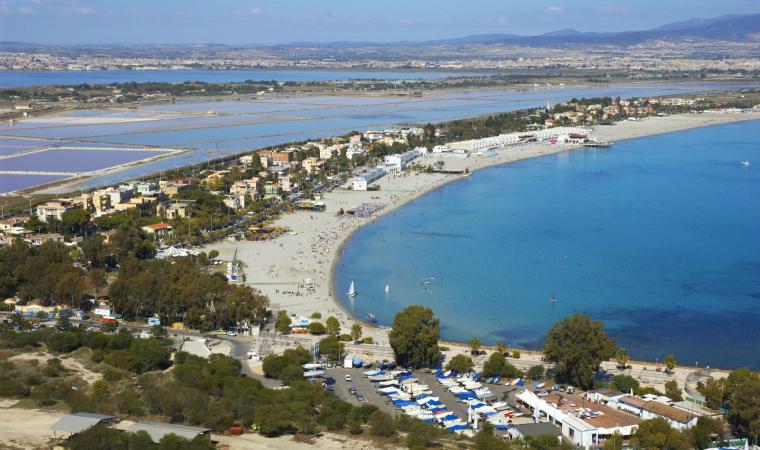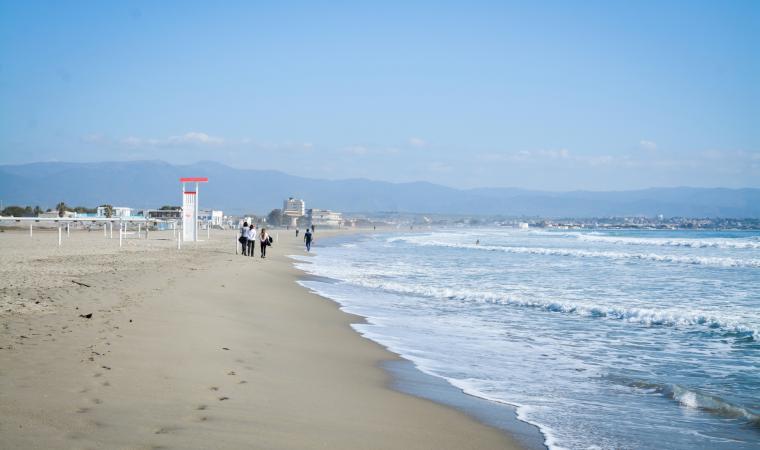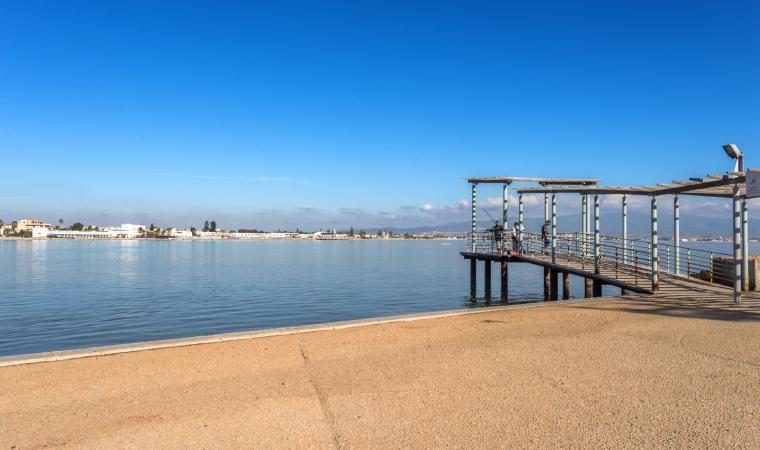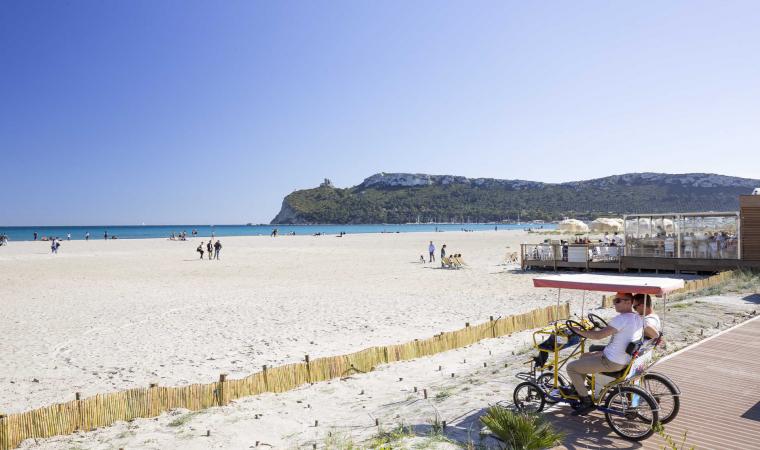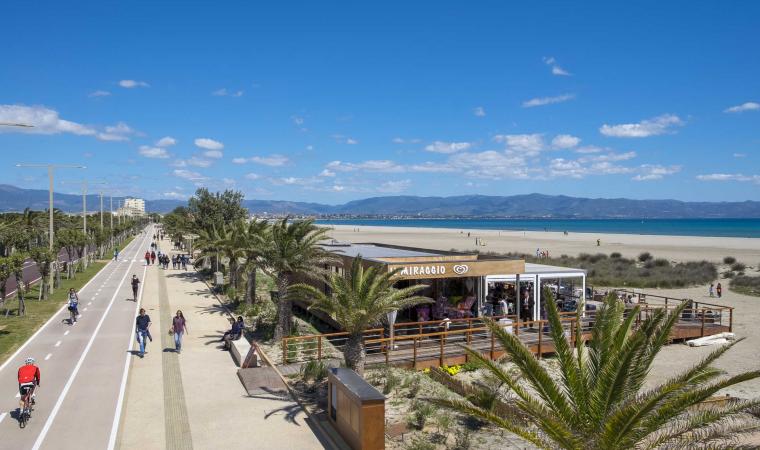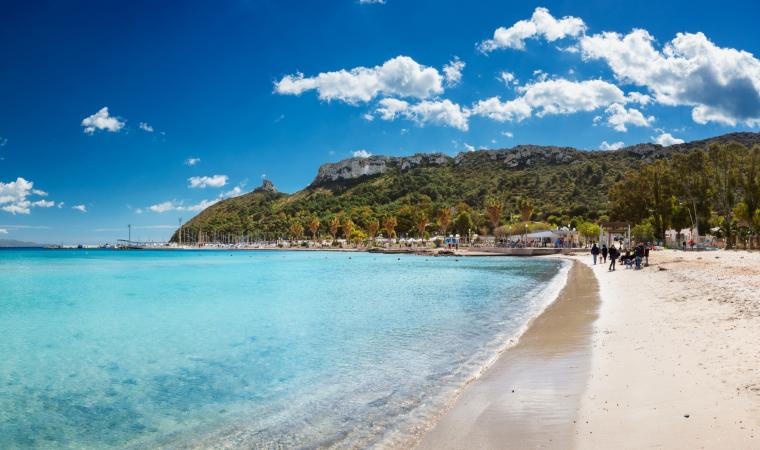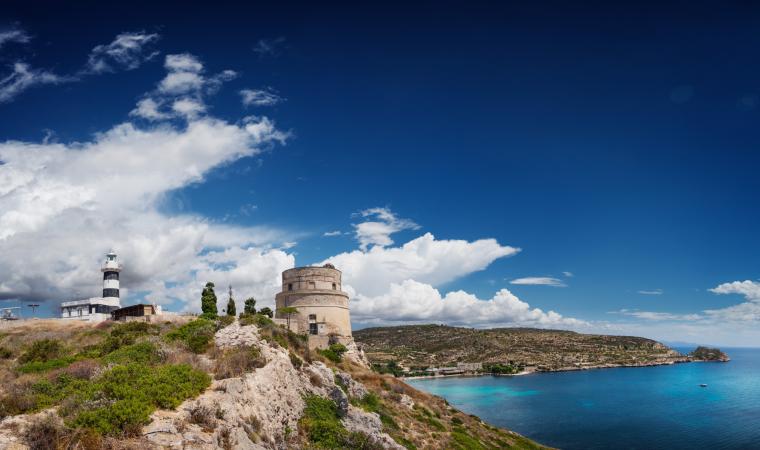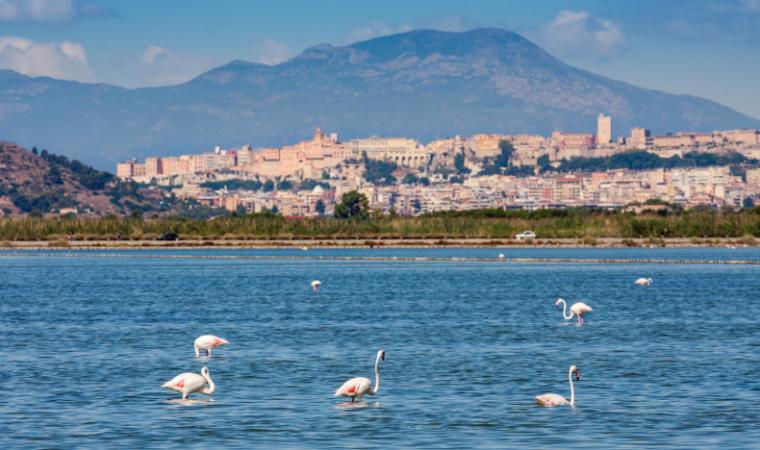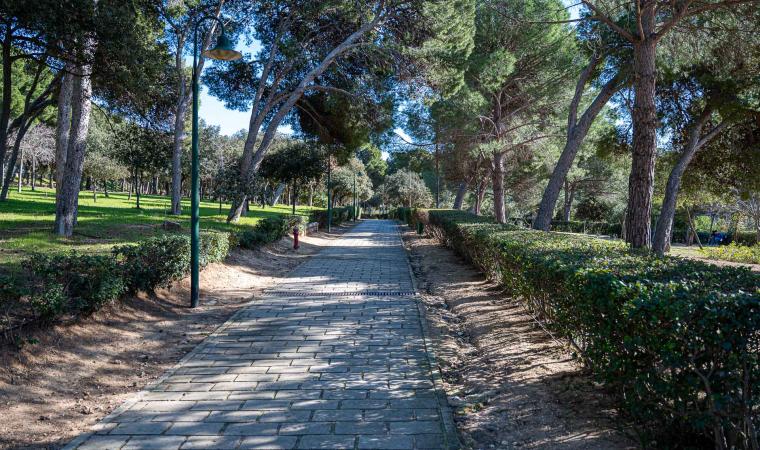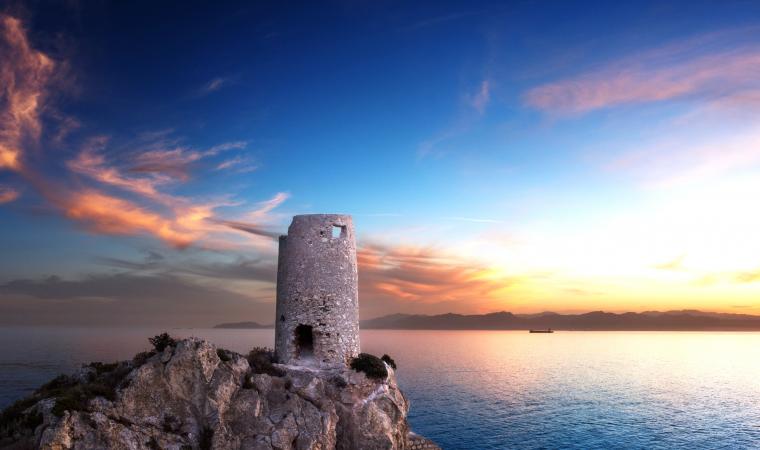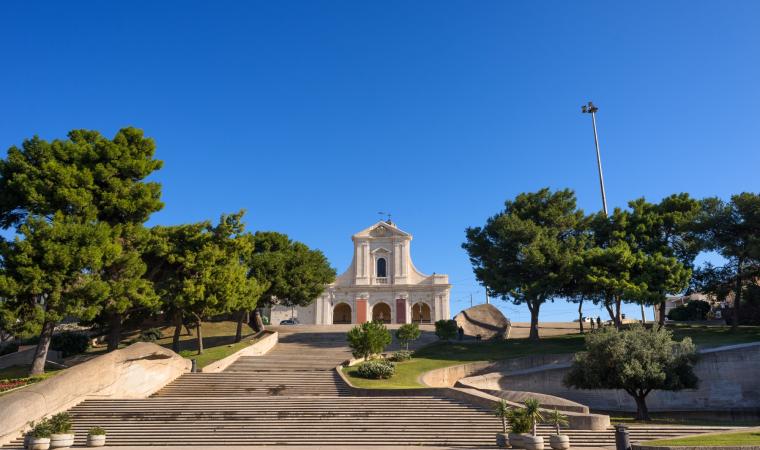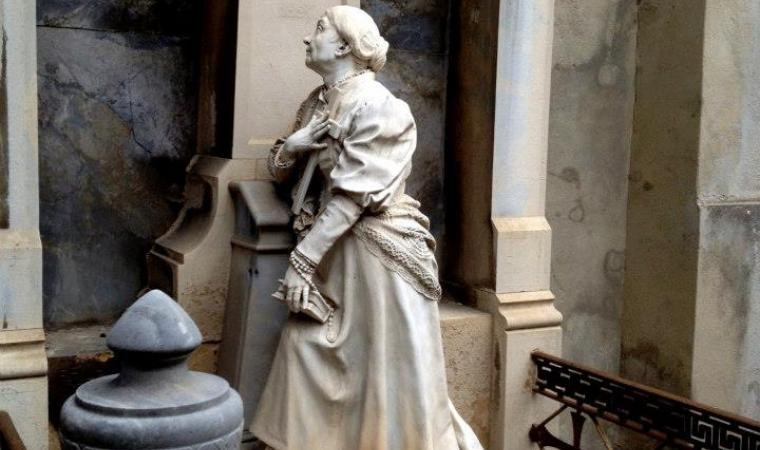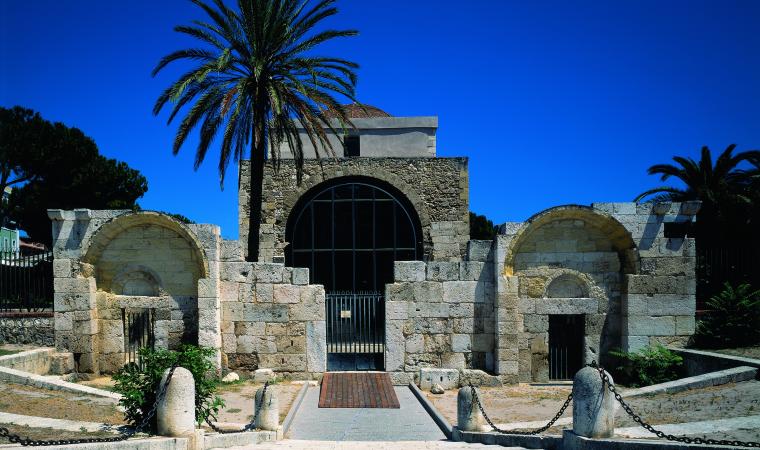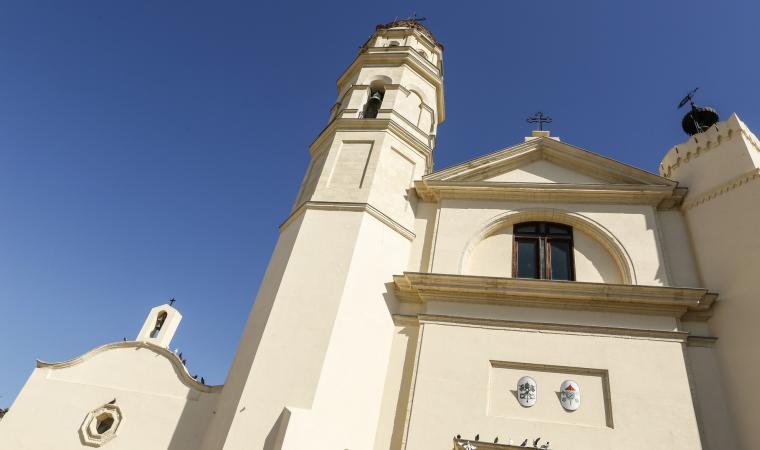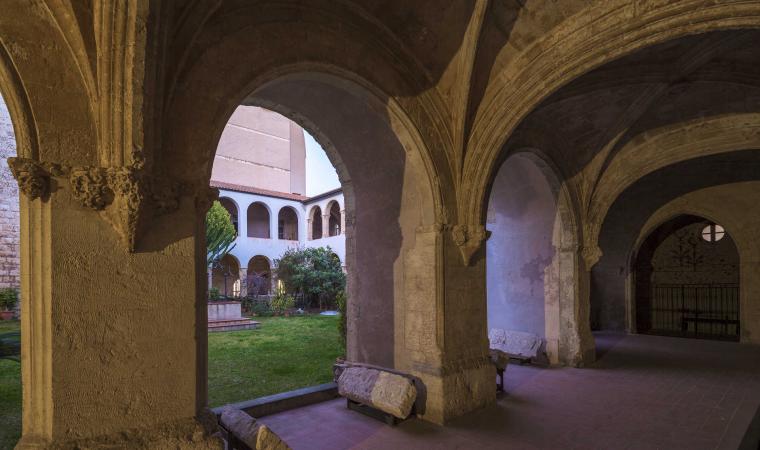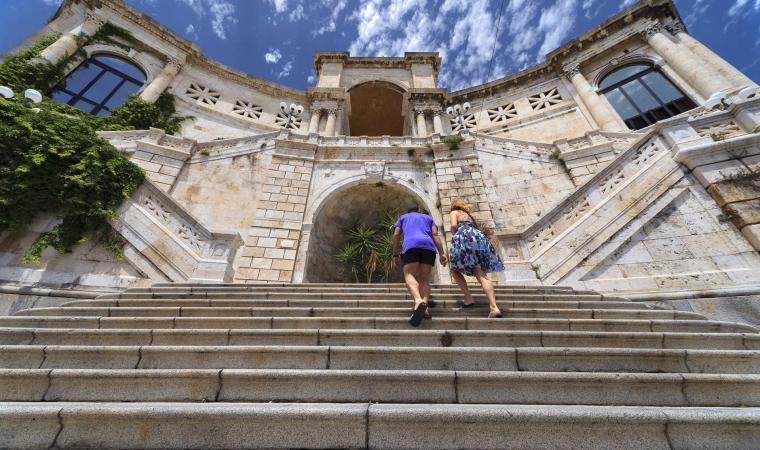Since the beginning of the 20th century, the inhabitants of Cagliari favoured the western part of the Golfo degli Angeli. Then, little by little, as they began to appreciate the white dunes, the first establishments, a kiosk and a summer camp were created and, lastly, the famous multicoloured bathing huts were built (and then completely removed in 1986). Over time, the area has become increasingly populated, earning it the name of 'Spiaggia dei Centomila' (beach of a hundred thousand). Today, the Poetto is the undisputed 'sea' of Cagliari's hinterland, one of the largest city beaches in Europe, as well as the most beautiful and frequented island, a favourite destination for those visiting the capital in summer or any sunny day throughout the year, also being a perfect stop to enjoy a coffee or aperitif accompanied by the sea breeze.
A few kilometres from the centre and port of Cagliari, the beach extends from the secluded and relaxing Margine Rosso on the Quartu Sant'Elena coast, through to the Sella del Diavolo, which embellishes the charm of looking down over Marina Piccola - offering the chance to savour a walk along the marina. From the Spanish tower atop, called “del poeta”, perhaps derives the name of the coastline, even if the most likely hypothesis is that it comes from the Spanish 'puerto' (port). You can climb up to the 17th-century tower along the promontory from Calamosca, with the route taking around an hour and being utterly beautiful by night. On the opposite coast of the 'Sella' hides the delightful and sheltered beaches of Calamosca and Cala Fighera.
The entire stretch of the Poetto beach is broad, whilst the water is clear and the seabed sandy and shallow for tens of metres, being ideal for children to play. The shore is irresistible for taking long walks. You can travel along the pathway that runs behind the modern waterfront - perfect for walking, jogging, biking, skating, rollerblading and skateboarding - whilst the characteristic kiosks near the sand offer refreshments and entertainment. Bathrooms and showers are available, with there also being some spaces reserved for dogs. Reaching the area from the city is easy, with the services being quite efficient and including bathing establishments, diving centres, sailing schools, boat rentals, beach tennis and volleyball courts, canoe rides, fast food and restaurants, along with shops and an amusement park that is open all-year-round. The lido offers an excellent beach break for surfing and kitesurfing, where world-class events are hosted, along with great nightlife in one of the main sites for summer by night in the vast area in which live music and dance lessons, bars and clubs are to be found.
The extension of the beach is evenly divided along the four kilometres or so of the Quartu coast and the four forming part of Cagliari, split according to the stops of the tram that has since been replaced by buses in more recent times. The 'first stop' has a very shallow seabed, the 'second' and 'third' are the place in which the historic establishments of D'Aquila and Lido are located, the law enforcement agencies are at the 'fourth' stop, while from the 'fifth', where the Spanish tower stands, to the end of the line, there is a vast stretch of 'free' beach. The border with the coastline of Quartu is La Bussola, the name of which comes from an establishment that is no longer in operation. From here, the free beach alternates with welcoming and well-equipped beach establishments.
From the beach, you can quickly reach the ‘vie del sale’ ('salt streets') that slightly extend the walk to the Molentargius-Saline park that has an entrance on the seafront. You will be spoilt for choice when it comes to choosing an excursion in the protected area - guided and free tours by bike and on foot, boat routes along the canals of the former salt marshes, electric buses. You are sure to enjoy a unique experience with a mix of historical and scientific knowledge through one of the most beautiful and important natural sites of the island, an oasis just a short distance from the city and a favourite abode for the pink flamingos that stop to nest here. Poetto and Molentargius are also closely linked by the activities of the salt mill that commenced in Roman times and ceased only in 1985.

